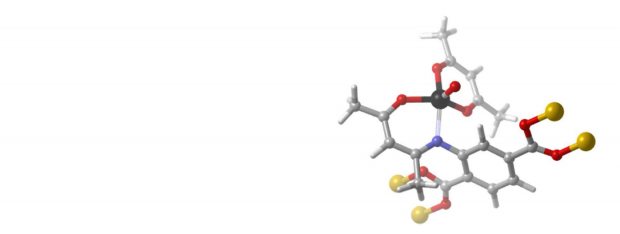Identification of vanadium dopant sites in the metal–organic framework DUT-5(Al)
Abstract
Studying the structural environment of the VIV ions doped in the metal–organic framework (MOF) DUT-5(Al) ((AlIIIOH)BPDC) with electron paramagnetic resonance (EPR) reveals four different vanadium-related spectral components. The spin-Hamiltonian parameters are derived by analysis of X-, Q- and W-band powder EPR spectra. Complementary Q-band Electron Nuclear DOuble Resonance (ENDOR) experiments, Scanning Electron Microscopy (SEM), Energy Dispersive X-ray spectroscopy (EDX), X-Ray Diffraction (XRD) and Fourier Transform InfraRed (FTIR) measurements are performed to investigate the origin of these spectral components. Two spectral components with well resolved 51V hyperfine structure are visible, one corresponding to VIV=O substitution in a large (or open) pore and one to a narrow (or closed) pore variant of this MOF. Furthermore, a broad structureless Lorentzian line assigned to interacting vanadyl centers in each other's close neighborhood grows with increasing V-concentration. The last spectral component is best visible at low V-concentrations. We tentatively attribute it to (VIV=O)2+ linked with DMF or dimethylamine in the pores of the MOF. Simulations using these four spectral components convincingly reproduce the experimental spectra and allow to estimate the contribution of each vanadyl species as a function of V-concentration.


_0.gif?itok=kp2w0kDX)